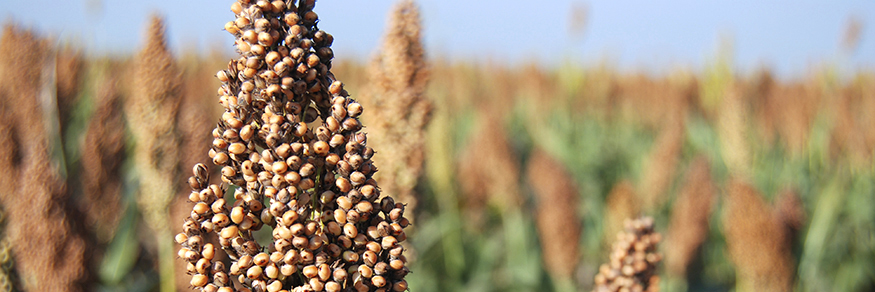
West-Central Region
Alabama Research Units
5. Chilton Research and Extension Center (CREC)
6. Black Belt Research and Extension Center (BBREC)
7. Prattville Agricultural Research Center (PARU)
8. Lower Coastal Plains Agricultural Research Center (LCPARC)

CHILTON RESEARCH & EXTENSION CENTER
Clanton, AL — It’s fitting that the Chilton Research and Extension Center is located in the shadow of Clanton’s famous giant peach water tower just off of I-65, because at the CREC, peaches rule. When the center was established in 1944, its mission was to identify superior varieties and develop new management techniques that would help Chilton County’s peach producers maximize their profits. And that’s still its mission today. The CREC does work with other small fruits—most notably kiwifruit—but peaches have priority.
AREAS OF RESEARCH
-
PEACHES – Chemical thinning projects, peach rootstock evaluation.
-
PEST MANAGEMENT – Integrated pest management of the plum curculio.
-
VEGETABLES, FRUITS, & BERRIES – Evaluation of plum, nectarine, satsuma, blackberry, fig, Japanese persimmon, muscadine, bunch grape and an assortment of vegetable varieties; Varietal research on kiwifruit is unique in the Southeast.
HISTORY
Established in 1948 on a 160-acre site near Clanton, the Chilton Research and Extension Center (formerly known as the Chilton Area Horticulture Substation) allowed extension of horticultural research into the central part of the state and promoted peaches as an increasingly valuable crop for the region’s farmers.
Although peaches absorbed the greatest attention of agricultural scientists, blackberries, sweet potatoes, beans peas, tomatoes and watermelons were also among the research interests of the station.
The Chilton Area Horticulture Substation was one of the five substations established in Alabama during and a few years after World War II: Upper Coastal Plain in 1944, Piedmont Substation in 1945, North Alabama Horticulture Substation at Cullman in 1948, Chilton Area Horticulture Substation at Clanton in 1948 and the Lower Coastal Plain Substation at Camden in 1948.
Contact
120 Co. Rd. 756
Clanton, AL 35045
+1 (205) 646-3610

Matt Price
Director
Chilton Research & Extension Center
+1 (205) 646-3610
Directions
OFFICE HOURS
6:30 AM — 3:30 PM
Office:
6:30 AM — 5:00 PM
Facilities
BLACK BELT RESEARCH & EXTENSION CENTER
Marion Junction, AL —Rolling prairie land and unique soil formations make the Black Belt Research and Extension Center in Marion Junction an excellent location for research on beef cattle and forages. The BBREC’s primary research focus is in the areas of grazing and animal breeding.
AREAS OF RESEARCH
-
ANIMAL HEALTH, NUTRITION AND REPRODUCTION – Projects include grazing studies as well as animal breeding experiments. Numerous cross-breeding studies at the BBREC have provided valuable information to the beef industry. Scientists are also investigating the effect of winter grazing systems on cow efficiency measures.
-
BEEF CATTLE – Projects include grazing studies as well as animal breeding experiments. Numerous cross-breeding studies at the BBREC have provided valuable information to the beef industry.
-
FORAGE PRODUCTION – Scientists are investigating the effect of winter grazing systems as well as the productivity, use and nutritive quality of dallisgrass.
-
VARIETY EVALUATIONS – Commercial varieties of grain sorghum are being evaluated for their resistance to the sugarcane aphid, which is causing significant economic losses throughout the Southeast. Various insecticide treatments also are being evaluated.
HISTORY
The Black Belt Research and Extension Center (formerly known as the Black Belt Substation ) at Marion Junction was established in 1930 and immediately focused upon restoring soil fertility to this much-abused land in an attempt to establish pastures to encourage the livestock industry.
The substation was the site for dairy demonstration units in the 1940s and for beef cattle nutrition research in the 1970s.
In the 1970s, researchers at the center were the first to associate poor cattle performance with endophyte fungus in fescue. That discovery resulted in new management strategies that allowed producers to dramatically increase weight gain in their herds and, subsequently, boost their profits.
Beef cattle, dairying, forages, soybeans and other crops adapted to the area continue to receive research emphasis.
BBREC was one of the first substations established in Alabama by the Legislature to create research facilities in five main areas of the state: Tennessee Valley, Sand Mountain, Black Belt, Wiregrass and Gulf Coast. Three of the five went into operation in 1929: The Tennessee Valley Substation at Belle Mina, the Sand Mountain Substation at Crossville and the Wiregrass Substation at Headland. The remaining two, the Black Belt Substation at Marion Junction and the Gulf Coast Substation at Fairhope, began operating in 1930.
Black Belt Weather
Contact
Black Belt Research & Extension Center
60 County Road 944
Marion Junction, AL 36759
+1 (334) 872-7878

Directions
OFFICE HOURS
Monday — Friday
Facilities
PRATTVILLE AGRICULTURAL RESEARCH UNIT
Pratville, AL — Since 1928, the Prattville Agricultural Research Unit has specialized in small-plot research on traditional row crops, primarily cotton.
AREAS OF RESEARCH
- COTTON – Early season insect control in the absence of in-furrow, at planting insecticides, the influence of cropping systems in controlling the bollworm complex in conventional and genetically altered cotton varieties, development and evaluation of breeding material for future agronomic performance, variety evaluations.
- VARIETY EVALUATIONS – Corn, cotton, small grain.
- SOILS – Long-term soil fertility studies on various crops.
HISTORY
The Prattville Agricultural Research Unit (formerly known as the Prattville Experiment Field) was established by 1930 and administered by the Department of Agronomy and Soils until the mid-1960s. The unit has largely been devoted to research on soil fertility and cropping methods.
Located just minutes from the state capitol building in Montgomery, PARU has provided the bulk of the cotton insect work for central and southern Alabama during the past 30 years. During the past decade, cotton acreages have returned to South Alabama and even surpassed the Tennessee Valley region as the dominant production area of the state.
Several major problems and events in cotton insect management and control occurred during this period. In the fall of 1986, the boll weevil eradication program was initiated and moved northward through the state. The next decade saw the outbreak of beet armyworms followed by pyrethroid-resistant tobacco budworms. The PARU was the primary site for research toward a solution to these problems. Data generated at PARU were used to justify a Section 18 Emergency Exemption for the use of Pirate insecticide against beet armyworms. Prattville was also one of the first locations to explore the value of Monsanto’s genetically altered Bt cotton. This cotton proved to be exceptionally effective against the pyrethroid-resistant budworms.
Prattville Experiment Field was one of ten experiment fields established and in operation by 1930 on tracts ranging from 33 to 60 acres in size. Of these ten, three remain in service today: Brewton Esperiment Field, Monroeville Experiment Field, and Prattville Experiment Field.
Prattville Weather
Contact

Directions
OFFICE HOURS
Monday — Friday
Facilities

